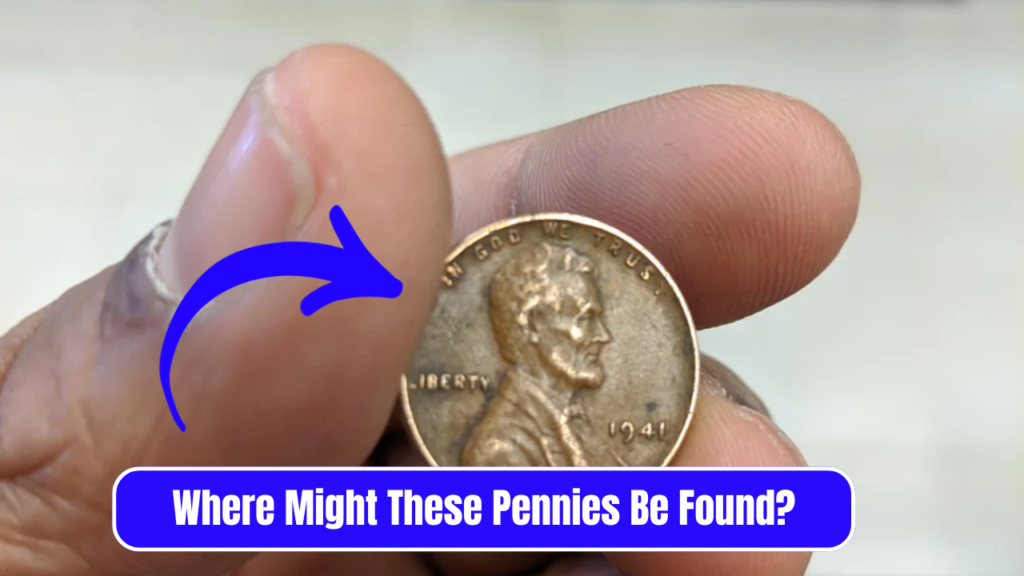Introduction
The idea that a small copper coin could be worth more than $100,000 may sound far-fetched—but for numismatists and savvy collectors, it’s a reality. The Lincoln Wheat Penny, a coin that once jingled in pockets across America, holds more than just historical value. Some rare varieties have fetched incredible prices at auctions, including one astonishing penny valued at $120,000 that may still be in circulation today.
This article explores the mystique surrounding the Lincoln Wheat Penny, breaking down why it’s so valuable, how to spot one, and what makes specific variants so lucrative. With up to 8,000 words dedicated to this tiny treasure, we’re diving deep into a coin that could quite literally change your financial life overnight.
What Is the Lincoln Wheat Penny?
The Lincoln Wheat Penny, also known as the “Wheat Cent,” was minted in the United States from 1909 to 1958. Named for the iconic stalks of wheat depicted on the reverse side, this coin features the bust of President Abraham Lincoln on the obverse. Introduced to commemorate Lincoln’s 100th birthday, it was the first U.S. coin to feature a historical figure.
Key Features:
- Obverse: Bust of Abraham Lincoln
- Reverse (1909–1958): Two wheat ears flanking the words “ONE CENT”
- Composition: Primarily copper (95% copper, 5% tin and zinc)
- Diameter: 19.05 mm

Why Are Lincoln Wheat Pennies Valuable?
Not all Wheat Pennies are created equal. While most are worth only a few cents over face value, certain rare versions are prized by collectors for their low mintage numbers, mint errors, and pristine condition. When these elements align, the value can skyrocket into five or six figures.
Reasons for High Valuation:
- Mint Errors (e.g., double dies, off-center strikes)
- Low Mintage (particularly during war years)
- Uncirculated or Proof Condition
- Historical Context
The $120,000 Penny: Details and Description
One of the most talked-about Lincoln Wheat Pennies is the 1943 bronze cent. While the U.S. Mint officially switched to zinc-coated steel in 1943 to conserve copper for WWII, a few bronze planchets from 1942 accidentally remained in the machines. These rare error coins are now considered numismatic legends.
1943 Bronze Lincoln Wheat Penny:
- Estimated Value: $120,000–$250,000
- Mintage Error: Bronze planchet used instead of steel
- Weight: 3.11 grams (heavier than the steel penny)
- Known Examples: Fewer than 20
Other Valuable Lincoln Wheat Pennies
Here’s a list of other valuable Lincoln Wheat Pennies and their average auction prices:
| Year | Mint Mark | Type | Value (USD) |
|---|---|---|---|
| 1909-S | VDB | Low Mintage | $1,500 – $3,000 |
| 1914 | D | Rare Issue | $250 – $2,500 |
| 1922 | No D | Missing Mint Mark | $500 – $12,000 |
| 1931 | S | Limited Circulation | $100 – $800 |
| 1955 | Double Die Obverse | Mint Error | $1,000 – $15,000 |
How to Identify a Valuable Penny
Finding a valuable Wheat Penny requires a keen eye and a bit of background knowledge. Here are tips to help you inspect your change:
Steps to Identify:
- Check the Date and Mint Mark
- Inspect for Errors or Anomalies
- Use a Magnifying Glass or Loupe
- Weigh the Coin (especially if you suspect it’s a 1943 bronze penny)
- Compare to Grading Charts
Helpful Tools:
- Coin scales
- Numismatic reference guides
- Online databases (e.g., PCGS, NGC)

Where Might These Pennies Be Found?
You don’t need to visit an auction house to come across one of these valuable coins. While rare, several collectors have found high-value Wheat Pennies in the most unexpected places:
- Loose change jars
- Grandparents’ collections
- Old purses or wallets
- Estate sales and flea markets
The Numismatic Market in 2025
The rare coin market remains robust in 2025, with online platforms like eBay and Heritage Auctions reporting record-breaking sales. As inflation and economic uncertainty drive interest in tangible assets, numismatic coins like the Lincoln Wheat Penny are attracting a broader range of investors.
Market Trends:
- Increased interest in precious metals and historic collectibles
- Younger demographics entering the market
- Blockchain-backed coin authentication
Conclusion
The Lincoln Wheat Penny is more than a nostalgic relic—it’s a financial opportunity hiding in plain sight. Among the most coveted variants is the 1943 bronze penny, valued as high as $120,000, and possibly still lurking in circulation. Understanding what to look for, where to find it, and how to authenticate it can make all the difference. In a time where every dollar counts, even a single penny might be worth a second look.
FAQs
1. What is the most valuable Lincoln Wheat Penny?
The 1943 bronze cent is among the most valuable, often fetching over $100,000 at auction.
2. How can I tell if my penny is rare?
Look for errors, unusual dates, missing mint marks, and signs of uncirculated condition.
3. Are all 1943 pennies valuable?
No. Only the bronze ones are rare. Most 1943 pennies are steel and worth just a few cents.
4. Where should I get my coin appraised?
Reputable numismatic dealers, PCGS, or NGC are trusted sources for appraisals.
5. Can I still find rare Wheat Pennies in circulation?
Yes, though rare, many collectors have found valuable coins in everyday change.



